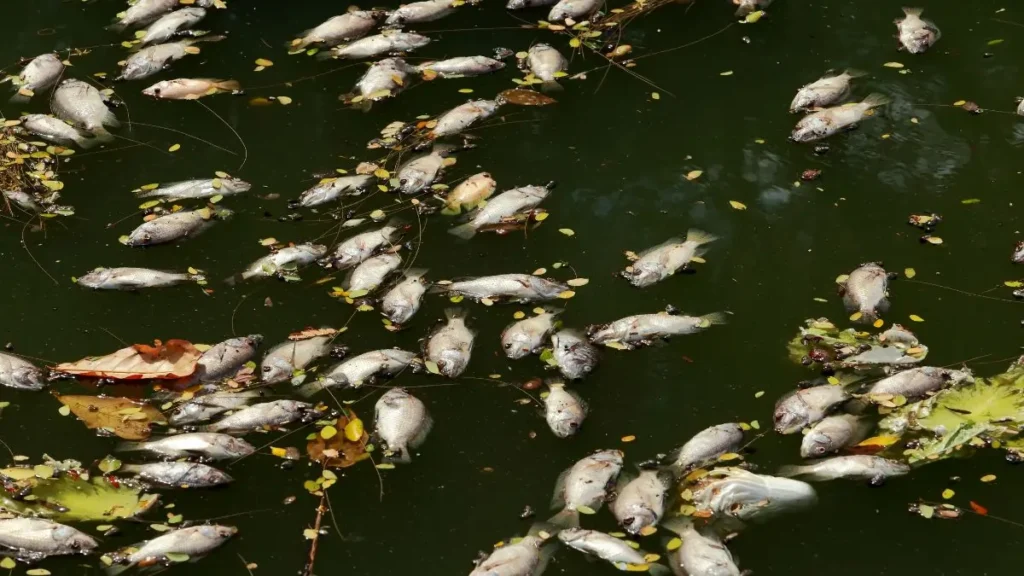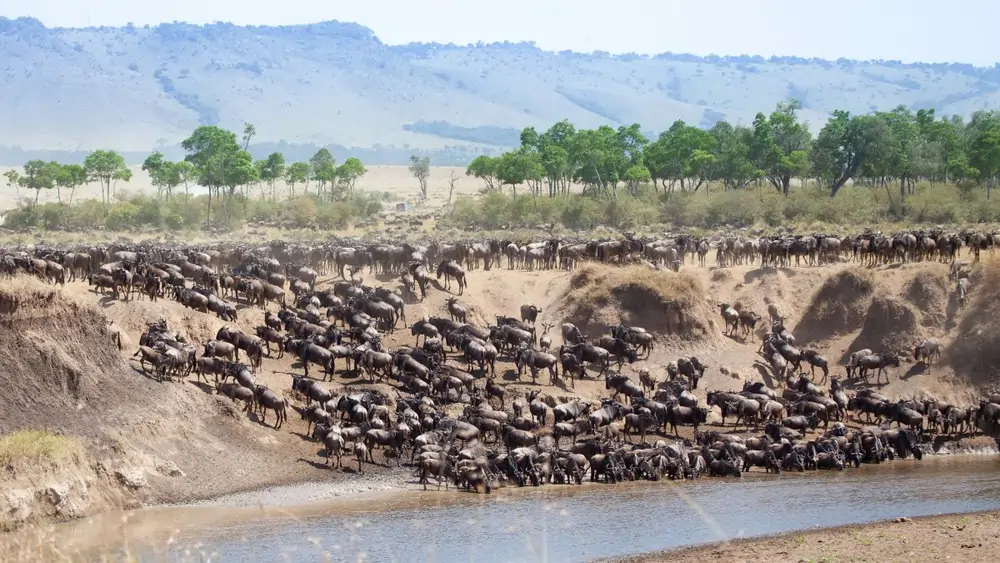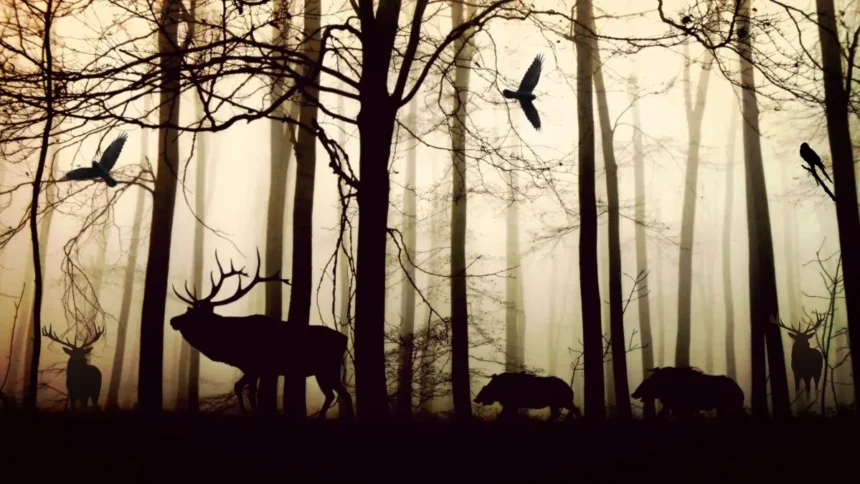Introduction
Imagine a world where birds’ songs are silenced, coral reefs’ vibrant colors fade, and majestic animals struggle to survive. How does pollution affect animals? This pressing question unveils the harsh reality that human activities endanger wildlife. Pollution, in its many forms—air, water, soil, and plastic—has far-reaching impacts on animal health and ecosystems. By exploring how pollution affects animals, we can understand the intricate ways toxins disrupt food chains, alter habitats, and reduce biodiversity.
Read also: Ecosystem | Definition, Components, and 5 Important Types of Ecosystem
Read also: Environmental Pollution | 7 Types of Pollution and their Alarming Effects
This article delves into the specifics of these effects, aiming to shed light on the urgent need for pollution control and conservation efforts. Join us as we examine how pollution affects animals and why it is crucial to add this issue for the future of our planet’s wildlife.
Types of Pollution and Their Sources
Air Pollution
Air pollution is one-way pollution affects animals. It is formed by byproducts of operations that make chemicals airborne. Close to the surface of the earth, sulfur dioxide (SO2) connects with the water cycle to produce acid rain or any other form of acid deposition. Nitrogen dioxide, an emission from vehicles and sunlight, combines with photochemical smog.
In the upper atmosphere, chlorofluorocarbons and other chemical compounds lead to the degradation of the earth’s ozone layer. The major pollutants in the air include burning fossil fuels, automobiles, agricultural activities, factories, mining activities, and other sources of domestic waste. Air pollution leads to several health hazards for animals in many ways.
The effects of pollution on animals, especially air pollution, are almost the same as those on humans. Like humans, animals suffer from breathing problems, skin diseases, etc.
Read also: How does Acid Rain affect Climate change?
Read also: Air Pollution | How to Measure it and its 7 Severe Effects
Water Pollution
It occurs when hazardous substances, such as chemicals or microorganisms, contaminate a lake, ocean aquifer, or other body of water. The primary contaminants are agricultural wastes, sewage and wastewater, oil pollution, and radioactive substances.

The main problem with water pollution is ruining our health; less than 1 percent of freshwater is accessible to us, causing algal blooms that degrade water quality. Oil spill in water makes the water unsuitable for drinking and creates a hazardous condition for marine life to survive.
The rate of water pollution determines how pollution affects animals. Water quality, pH level, metal contamination level, etc., together decide how pollution affects animals, especially aquatic animals.
Read also: Why is water pollution an emerging Global Crisis?
Read also: Why Urbanization Contributes to Pollution- 5 Alarming Facts About It
Soil Pollution
It is a severe environmental condition caused by toxic substances contaminating the soil. It is a very serious concern that harbors many health hazards. For instance, a higher amount of benzene may increase the threat of contracting leukemia.
Heavy metals, including arsenic, antimony, cadmium, thallium, and chlorinated industrial solvents, are the primary pollutants of the soil. Herbicides, pesticides, insecticides, and fungicides also ruin the quality of the soil. Soil quality and soil degradation rate cause severe effects of pollution on animals, mostly terrestrial animals.
Read also: Soil Pollution – A Hidden Threat to Civilization
Plastic Pollution
It is caused by the implementation of plastic waste in landscapes and waterways, improper disposal of plastics, and the fact that plastic is not easily mixed with the soil. Pollutants include plastic flowing into the rivers and oceans, creating havoc for marine life and fish. Plastic is also a source of polychlorinated biphenyls (PCBs).
The effects of pollution, especially plastic pollution, are hard to identify and cure. Hence, it’s very important to look for the tiniest sign of plastic pollution – microplastic pollution on animals.
Read also: Plastic Rocks – A Dreadful Nuisance of Plastic Pollution in 2024
Read also: 5 Extreme Causes of Water Pollution and its Hazardous Effects
How Does Pollution Affect Animals?
Disruption of Food Chains & Food Webs
Disruption of food webs by environmental pollution is a must while discussing ‘How does pollution affect animals?’ Pollution decreases the flow of the food chain by moving toxins from one position to another higher place. In some instances, pollution can wipe off an entire part of the food chain.
Other conditions cause immense growth in such situations, and the predators die afterward. The introduction or deduction of certain microorganisms even disrupts the ecosystem, including nutrient pollution, an increase in algae, or depletion of oxygen.
Read also: Why is Food Web Important? Types of Food web
Read also: Importance of Food Chains In The Energy Flow In The Ecosystem
Effects of pollution on animals
The aftermath of different types of pollution is very noticeable and daunting to diagnose. It has been proven that toxic fumes damage pets’ lungs, destroying their respiratory systems, which are much more sensitive than humans.
They are even experiencing health issues due to skin allergies and skin issues caused by smog. Wild animals don’t get enough access to clean water, destroying their livers. The effects of pollution on animals are devastating; certain species are becoming extinct as they are devoid of fresh air, which is needed for survival.
Air pollution
- According to the research, evidence suggests that the neurotoxicity caused by air pollution is increasing rapidly. Birds in urban areas face skin allergies and irritations, ruining their overall well-being.
- In polluted places, the release of endocrine-disrupting pollution is causing a serious threat because it disturbs hormonal imbalances and influences the reproductive health of animals. Amphibians are showing alarming issues, including lower sex ratios and deformation of limbs.
- Air pollution also hurts animals’ reproductive ability, and their weak immune systems make them prone to different illnesses.
Read also: What is the greatest contributor to air pollution in the United States?
Soil pollution
Soil pollution increases the toxicity and salinity of the soil, making it impossible for plants to grow properly. It decreases the nutrient availability to plants, and the soil becomes contaminated with inorganic aluminum, which, in turn, is passed to the food web, resulting in the extinction of animals.
Noise Pollution
Noise pollution can disrupt the natural behavior of animals and cause changes in communication and physiology. It causes stress, loss of hearing, and the breeding and reproduction of the animals. They may find it difficult to capture their prey, and mammals like birds can get affected as they are vulnerable to noise.
Light Pollution
Artificial light may have several effects on wildlife. It can have problems attracting organisms, resulting in them not being where they need to be. They might also be preyed on, creating a trap for them.
Read also: Light Pollution Exposed: Unveiling Its Alarming Effects on Our Environment and Health
Plastic Pollution
Marine creatures like sea turtles, whales, and sea birds may ingest plastic bags, bottle caps, and other plastic fragments, which can block their digestive systems and lead to starvation.
Eutrophication
An excessive algal bloom may lead to less oxygen, which might kill fish and cause a decline in crucial fish habitats. Eutrophication, which results from algal blooms, is one of the major effects of pollution on animals, namely aquatic species.
Biomagnification
Biomagnification through the food chain builds due to the accumulation of the food chain. This harms organisms’ fatty tissue. It is another form of water pollution and has devastating effects on animals. Explaining the stages of biomagnification clarifies how pollution affects animals.
Effects of pollution on species
Habitat Loss:
Pollutants like untreated sewage, mining wastes, and other fertilizers and pesticides end up in rivers, lakes, and wetlands and eventually in estuaries and the food web, killing various species. Other human activities negatively impact the environment, destroying their natural habitat.
Read also: Biodiversity Crisis: 5 Shocking Ways We’re Losing Nature’s Riches
Altered Migration Patterns
Animals utilize predictable environments for habitat change and migration, but pollution disrupts their navigation timing due to changed weather and climatic conditions. The altered migration pattern is an example of how pollution affects animals.

Effects on Marine Animals
Marine pollution often occurs due to the utilization of substances spread by humans, including industrial, agricultural, and residential wastes. Most of these wastes come from marine transportation and contamination due to nitrogen, pesticides, dust particles, and runoffs. Pollution of the oceans is of serious concern in understanding how pollution affects animals.
Read also: Ocean Acidification: Unveiling the Hidden Crisis Threatening Marine Life
Pollution and Climate Change
Climatic change is one of the challenges faced due to air pollution, which is increasing daily. The continuous burning of fossil fuels increases carbon dioxide levels and other greenhouse effects in the atmosphere. These gases trap heat, which leads to house problems while increasing the temperature. Polar ecosystems are primarily facing global warming, leading to melting glaciers and rising temperatures about twice the average. The increasing carbon dioxide warming of the planet creates health issues for the animals. Acidic rain degrades the quality of the ambiance and leads to various animal deaths.
Nature’s fragility can be seen everywhere, from the equatorial region to the poles. Not a single corner of the Earth is free from pollution, and so no animal or plant life is safe. Effects
Read also: Climate Change | 7 Alarming Effects and the Major Causes Behind
Read also: Climate Change and Greenland Glacial Melt – 5 Alarming Effects
Polar bears and melting ice caps
The melting ice sheets in the Arctic Sea force polar bears to move from one place to another, risking their health and causing degradation and starvation.
Read also: The Melting Crisis – The ‘Doomsday Glacier’
Plastic pollution and birds
Birds unwillingly make their chicks eat plastic on plastic, which is very hazardous to their not properly developed organs.
Plastic Debris is a global concern as it threatens marine life. Global plastic pollution has increased significantly, with more than 300 million tons of plastics compared to 1.5 million tons in 1950. Much marine plastic pollution has been generated and taken to the coastal areas. Most plastic debris is situated on the coast and is carried in the ocean, as found in 2019.
Agricultural waste pollution and bees
Agricultural chemicals, including pesticides, make bees vulnerable to death. Due to runoffs, secondary poisoning, and pesticide drift, animals take in contaminated food from the local water bodies.
Mitigation and Conservation Efforts
- Some pollution control measures must be taken, including refusing sanitary landfills, emission controls, sedimentation control, and sewage systems.
- In addition, species conservation is required to prevent the loss of biological diversity, which includes implementing the process of recycling substances, decreasing the use of fossil burning or emission of vehicles, or getting rid of toxic substances for biodiversity. Along with that, technology should be implemented to create awareness.
- Developing and building safeguarded areas, for instance, national parks and sanctuaries, to protect the animals,
- Humans must remember the urgent need to reduce deforestation, clear land for their benefit, and increase awareness of reducing pollution.

Conclusion
In conclusion, exploring how pollution affects animals reveals human activities’ profound impact on wildlife. Pollution in its various forms—air, water, soil, and plastic—disrupts food chains, degrades habitats, and diminishes biodiversity. The intricate connections within ecosystems are strained as toxins accumulate, altering animal behavior and survival rates.
The question remains: How does pollution affect animals? The answer is clear: it profoundly affects them, with far-reaching consequences for their health, behavior, and survival.
But this is not a story without hope. By adopting sustainable practices, supporting conservation efforts, and advocating for stronger environmental policies, we can mitigate the damage and create a healthier planet for all living beings. Our choices today will determine the fate of countless animals and the future of our shared environment. It’s time to take responsibility for our actions and ensure that the question “How does pollution affect animals?” is answered with a tale of resilience, recovery, and respect for the natural world.
Call to Action
Let’s take action today to protect wildlife from the devastating effects of pollution. Join local conservation efforts, reduce plastic use, and advocate for stronger environmental policies. Together, we can make a difference. Share this article to spread awareness and inspire others to join the fight against pollution. A little effort can help preserve the planet for future generations and protect animals from the deadly effects of pollution.
FAQs
1. How does air pollution affect animals?
Air pollution affects animals primarily through respiratory issues, toxic exposure, and habitat degradation. Pollutants, including SO2, nitrogen oxides, and particulate matter, can cause respiratory problems and reduce animal lung function.
Harmful chemicals can accumulate in their bodies, leading to long-term health problems. Additionally, air pollution can harm vegetation and water sources, disrupting the habitats and food sources animals rely on.
2. What are the impacts of water pollution on marine life?
Water pollution significantly impacts marine life by introducing harmful substances like chemicals, heavy metals, and plastic debris into aquatic environments. These pollutants can cause direct harm to marine animals through ingestion, entanglement, and exposure to toxic substances.
For example, plastic pollution leads to ingestion and entanglement, while chemical pollutants can disrupt reproductive systems and increase mortality rates. Water pollution also affects the food web, altering predator-prey relationships and reducing biodiversity.
3. How does soil pollution affect terrestrial animals?
Soil pollution affects terrestrial animals by contaminating their habitats and food sources. Pollutants like pesticides and industrial chemicals can gather in the soil and enter the food chain through plants and tiny organisms.
Animals that consume contaminated plants or prey are at risk of poisoning, which can lead to health problems, reproductive issues, and even death. Soil pollution also degrades habitats, reducing the availability of clean water and safe nesting sites for animals.
4. What is the impact of plastic pollution on wildlife?
Plastic pollution impacts wildlife by causing ingestion, entanglement, and habitat disruption. Animals sometimes mistake plastic debris for food, leading to ingestion that can cause internal injuries, blockages, and starvation.
Entanglement in plastic waste can restrict movement, cause injuries, and lead to drowning in aquatic animals. Plastic pollution also disrupts habitats, contaminating soil and water sources and altering the natural environment that wildlife depends on for survival.
5. How does climate change related to pollution affect animal habitats?
Climate change, driven by pollution, affects animal habitats by changing temperature, precipitation patterns, and sea levels. These changes can disrupt ecosystems, forcing animals to migrate, adapt, or face extinction.
Warmer temperatures can shift habitats, making them unsuitable for some species, while changing precipitation patterns can affect water availability. Rising sea levels threaten coastal habitats, leading to loss of breeding grounds and increased competition for resources.
6. How can we mitigate the effects of pollution on animals?
Mitigating the effects of pollution on animals involves several strategies:
Reducing Emissions: Implementing stricter regulations on industrial emissions and promoting clean energy sources.
Waste Management: Improving recycling programs and reducing plastic use to prevent pollution.
Conservation Efforts: Protecting natural habitats through conservation projects and creating wildlife reserves.
Public Awareness: Educating the public about the impacts of pollution and encouraging eco-friendly practices.
Research and Monitoring: Conduct research to monitor pollution levels and their effects on wildlife and develop new technologies for pollution control.
References
- The Editors of Encyclopedia Britannica. (2022). What are the different types of pollution? In Encyclopedia Britannica.
- Air pollution – definition, causes, effects and control. (2015, December 4). BYJUS; BYJU’S. https://byjus.com/biology/air-pollution-control/
- Water pollution: Everything you need to know. (2023, January 11). Nrdc.org. https://www.nrdc.org/stories/water-pollution-everything-you-need-know
- Soil Pollution. (2018, July 24). BYJUS; BYJU’S. https://byjus.com/chemistry/soil-pollution/
- Lorenz, A. (n.d.). Types and effects of water pollution. FairPlanet. Retrieved May 29, 2024, from https://www.fairplanet.org/story/types-and-effects-of-water-pollution/
- (N.d.). Researchgate.net. Retrieved May 29, 2024, from https://www.researchgate.net/publication/332393818_Human_alteration_of_food_webs_research_priorities_for_conservation_and_management
- (N.d.-b). Pressbooks.Pub. They were retrieved May 29, 2024, from https://openoregon.pressbooks.pub/mhccmajorsbio/chapter/terrestrial-biomes/#:~:text=There%20are%20eight%20major%20terrestrial,geographic%20locations%20with%20similar%20climates.
- Nathanson, J. A. (2024). Pollution control. In Encyclopedia Britannica.
- How does air pollution affect animals? 6 deadly effects. (n.d.). Airly.org. Retrieved May 31, 2024, from https://airly.org/en/how-does-air-pollution-affect-animals-6-deadly-effects/
- Davda, K. (2023, August 30). Effect of air pollution on plants and animals. Oizom. https://oizom.com/effect-of-air-pollution-on-plants-and-animals/





